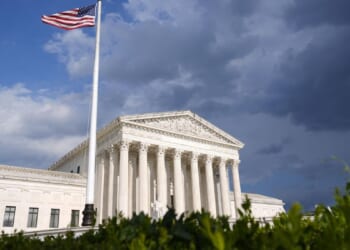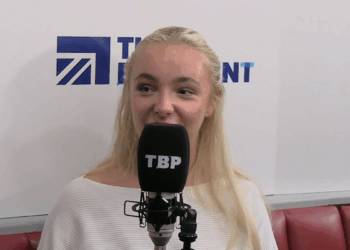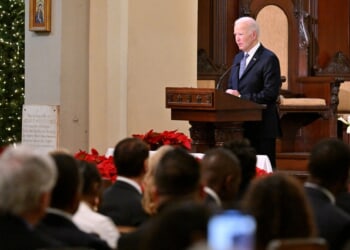
Undergraduate enrollment increased by 2.4% this fall, marking the third consecutive year of gains driven by growth at community colleges and trade programs.
The National Student Clearinghouse Research Center estimated Tuesday that enrollment rose by 4% at two-year colleges from fall 2024, by 1.9% at four-year public universities and by 0.9% at four-year private campuses.
The nonprofit research center’s preliminary report noted that enrollment rose by 6.6% for trade certificates and 3.1% for associate’s degree programs, while bachelor’s degree enrollment inched up by 1.2%.
“That’s good news all around, but especially for community colleges as students continue to gravitate towards vocational certificates and associate degrees, leaving less momentum for growth among bachelors’ seekers,” Doug Shapiro, the clearinghouse’s executive director, said in a statement.
The research center produces the most comprehensive college enrollment estimates. It based its estimates on reports from 49.5% of U.S. colleges and universities that enrolled 8.5 million students as of Sept. 25.
The report also found that undergraduate enrollment in computer and information science programs saw “a significant drop this fall,” with declines ranging from 5.8% at community colleges to 15% at graduate schools.
By contrast, skilled trade and health majors boomed. The report found that two-year institutions reported an 8.3% surge in programs for engineering technicians and a 10.4% spike for mechanics and repair technicians.
Annual growth in the number of health majors ranged from 2.7% for graduate schools to 10.1% for community colleges this fall.
Several higher education experts said the findings affirm the increased affordability concerns of prospective students since the pandemic. They noted that rising living costs have driven more students toward low-cost credentials that lead quickly to good-paying jobs.
“The significant increases in undergraduate certificate programs and community college enrollment are proof that students want specific skills and on a timeline that works for their lifestyle,” said Rob Anderson, president of the State Higher Education Executive Officers Association, which represents state agencies overseeing public colleges.
Jonathan Zimmerman, a professor of the history of education at the private University of Pennsylvania, an Ivy League school, said students should nevertheless keep their learning options flexible.
“The crash in degrees for computer scientists, who have increasingly been replaced by artificial intelligence, also underscores the danger of linking college solely to future occupations,” Mr. Zimmerman added. “None of us know what the future will hold, which is why we also need a broad liberal-arts education that can prepare us for any number of jobs.”
According to College Viability, which evaluates campuses’ financial health, most institutions are still seeing long-term enrollment declines from five to 10 years ago, and four-year graduation rates are hovering around 50% nationwide.
Gary Stocker, a former private college administrator who founded College Viability, said this fall’s enrollment increases boosted Ivy League and top-ranked public universities with the sort of “brand recognition” that smaller schools lack.
“Hundreds of colleges have announced enrollment increases,” Mr. Stocker said in an email. “However, hundreds more made no enrollment increase announcement.”
The clearinghouse will release its final fall enrollment estimate on Jan. 15 after the other half of the nation’s roughly 6,000 colleges and universities report their numbers.
This week’s report reflects a modified methodology after the clearinghouse reported in January that it incorrectly estimated that first-year enrollment declined by 5% in fall 2004, when it actually rose by 5.5%.
The preliminary fall estimates published Tuesday are the first to exclude dual-enrolled high school students taking courses for college credit, which officials said caused last year’s miscount.
The latest report found that first-year enrollment among 18-year-old high school graduates rose by 3.2% this fall, compared with 3.3% growth among students aged 25 to 29 and 2.7% for those aged 30 or older.
The numbers come as higher education leaders anticipate a “demographic cliff” next year, driven by a years-long decline in U.S. births since 2008
The nonprofit Western Interstate Commission for Higher Education has projected that U.S. high school graduation numbers will decline steadily from a record 3.9 million students in 2025 to under 3.4 million in 2041, reversing decades of growth.
“This is what you expect from the highest number of high school graduates the country has ever produced,” said Patrick Lane, vice president for policy and research at the commission, referring to the fall enrollment increases. “This is good news for employees, the economy, and any areas with workforce shortages.”
Siri Terjesen, an economist and associate dean at public Florida Atlantic University, said her school has seen “massive enrollment growth” in undergraduate business programs since the pandemic.
“My experience is that students and their parents have become savvier customers,” Ms. Terjesen said.







![Charlie Kirk's Executive Producer Reveals Staggering Data Surrounding Arizona Memorial [WATCH]](https://www.right2024.com/wp-content/uploads/2025/09/Charlie-Kirks-Executive-Producer-Reveals-Staggering-Data-Surrounding-Arizona-Memorial-350x250.jpg)








